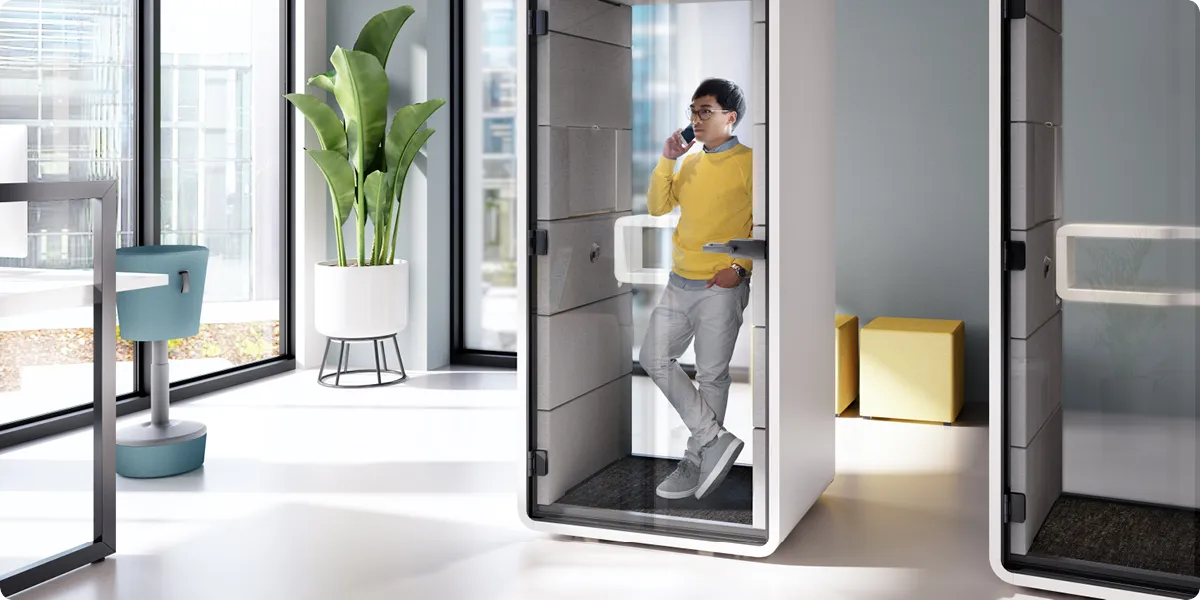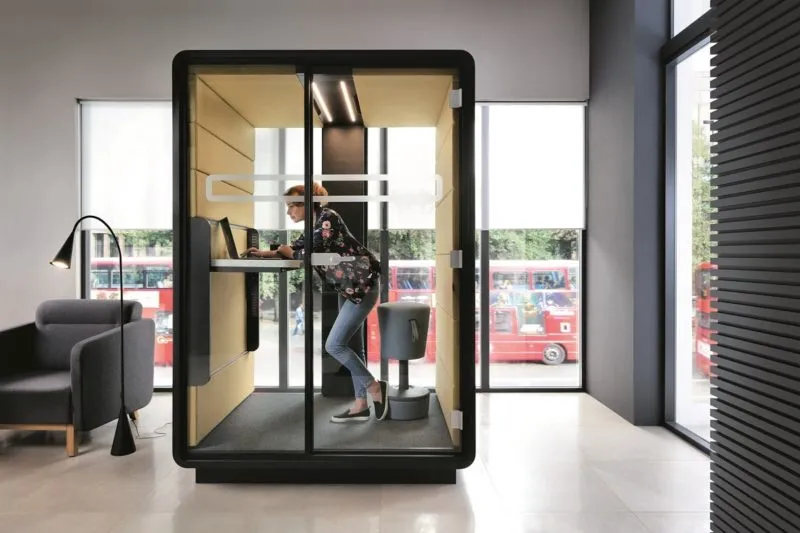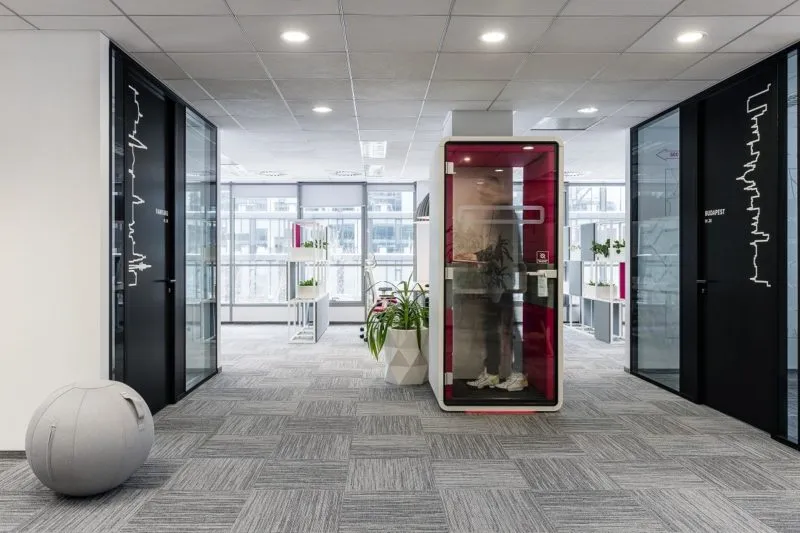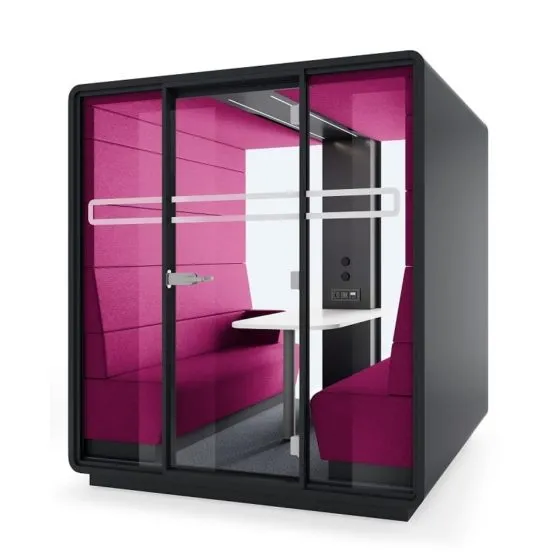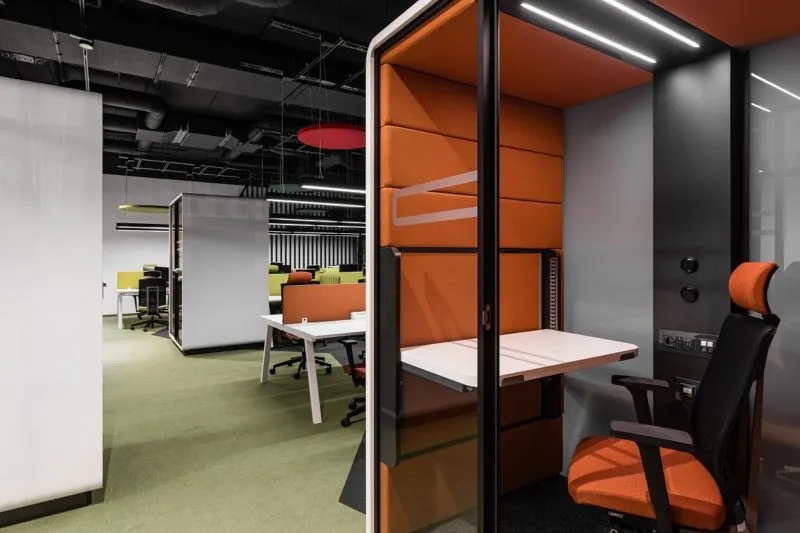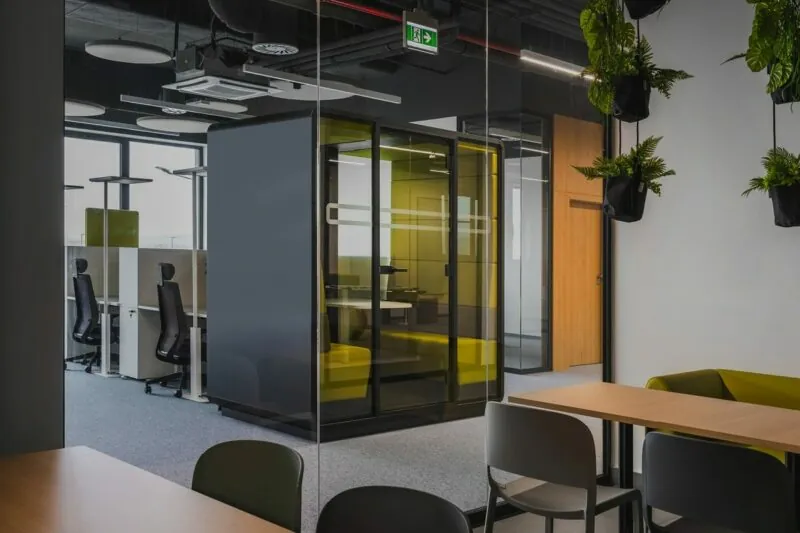How to prevent sensory overload in open plan offices
- Posted on: 15 February 2024
- By: Hushoffice Team
Sensory overload is when stimuli overburden your senses. Difficulty functioning in one’s space is the clear indicator — hazy thinking, discomfort, anxiety, and so on. It is an inherent risk in open workplaces. Acoustic pods and booths offer peaceful refuge, helping maintain balance.
Sensory overload in open plan offices – tl;dr
Sensory overload in the office happens when an employee is overwhelmed by the stimuli around them. At least one of the five senses may be taxed. In many cases, multiple senses may be overburdened at once. Employees with ADHD, autism, PTSD and other conditions which affect the way they process sensory input are most adversely affected by high-activity office spaces. Accommodating this cohort is requisite to designing a universal workplace which is inclusive and accessible.
Common sources of sensory overload in the office include background noise, bright, harsh lighting, cleaning chemical smells, employee perfumes and colognes, offensive food scents, and excess visual or peripheral commotion. Of all these sources, office noise is shown to be the most destructive on well-being and cognition.
The clear way to alleviate sensory overload is to give the senses a break from all the commotion. Acoustic office pods are excellent solutions to this dilemma as they are quiet, private, self-contained environments where employees can tune out the world and recharge.
What is sensory overload in the office?
Sensory overload happens when one or more of the body’s five senses is overtaxed by stimuli. Perhaps a colleague’s perfume is too strong. Or the office is too loud. Or devices keep pinging. Individual sensitivity exacerbates sensory overload and excess inputs (sights, sounds, etc.) compound it.
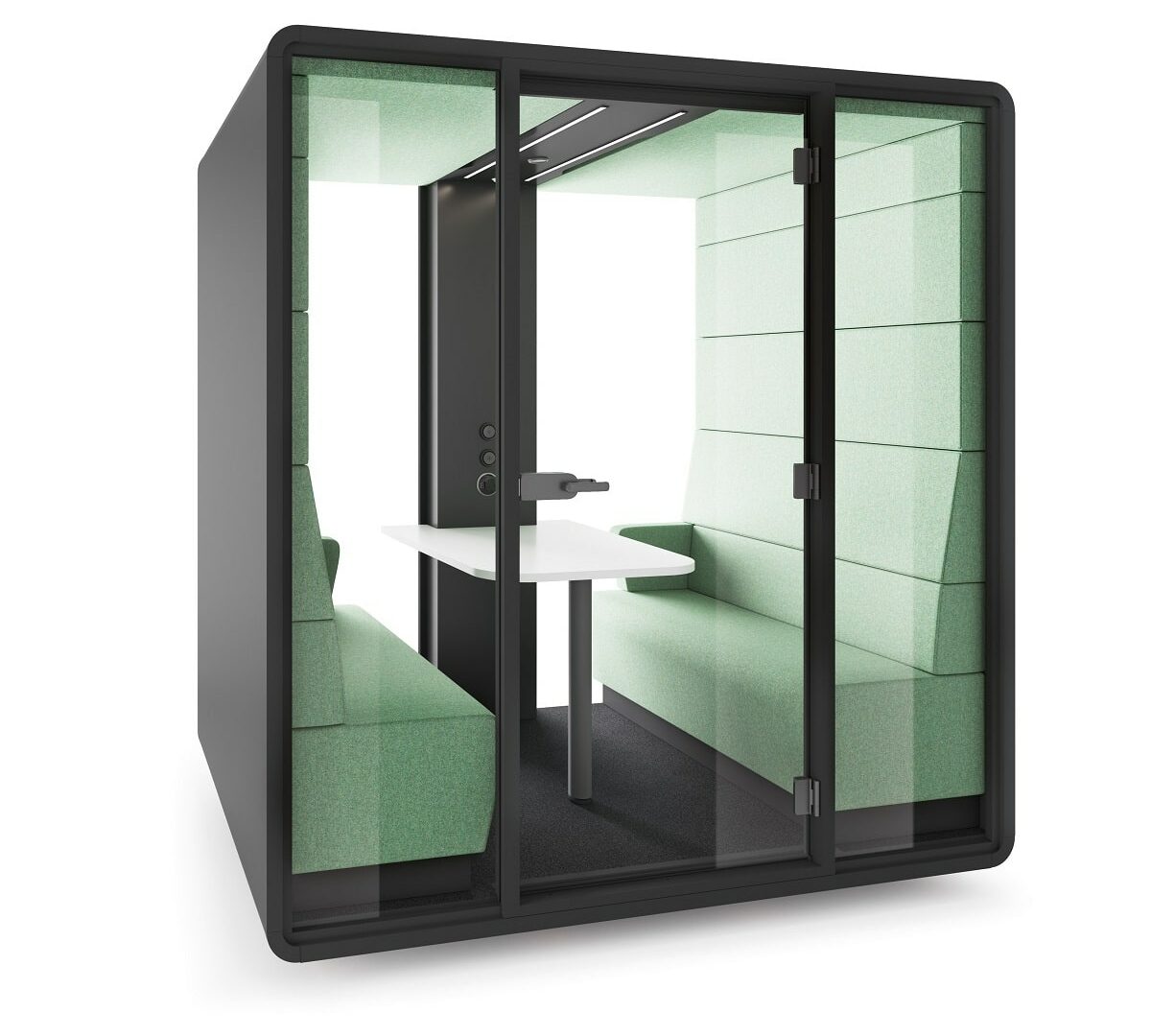
To address the impact of sensory overload, employers can take steps toward a more sensory-friendly workplace. In simplest terms, a sensory-friendly workplace is relatively quiet and calm and offers controllability over the environment wherever possible. This may include relaxing spaces like Hushoffice acoustic pods, soundproofing measures, adjusting lighting conditions, and offering flexibility in work arrangements
– says Mateusz Barczyk, Senior Brand Manager, Hushoffice.
How does sensory overload affect employees? In one word: negatively.
We’re sensory creatures. We rely on our senses to interpret and navigate the world safely, making “sense” of its information through sight, sound, smell, taste, and touch. When we can’t make sense out of the information (due to too much of it), we feel unsafe. Thus, overload is a bad thing.
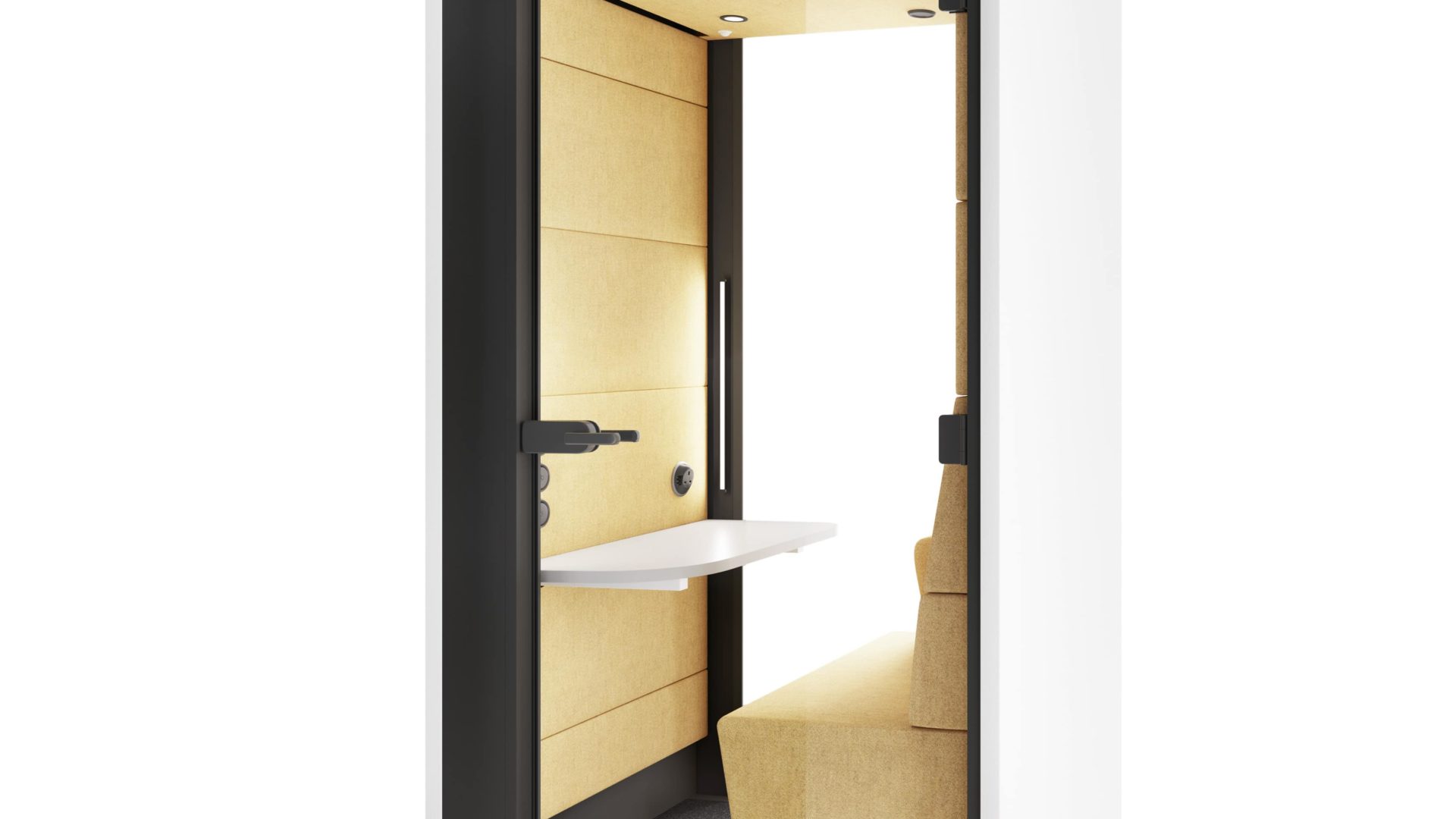
Stress Constant exposure to excessive stimuli can heighten stress levels. This contributes to feelings of anxiety and tension, making it challenging for employees to focus on their work.
Difficulty Focusing Sensory overload can make it hard for employees to stay on task, regardless of their personal determination. The fact is, every brain has limited processing capacity. Thus, persistent distractions can impair cognitive functioning, hurting productivity.
Fatigue Coping with too much surrounding activity requires additional mental and emotional energy. Employees in bustling offices may feel mentally drained by the end of each day’s work if they don’t have quiet spaces to seek refuge in periodically.
Irritability A continuous barrage of sensory stimuli that is bothersome or uncomfortable is a perfect recipe for irritation. Irritation invariably affects interpersonal relationships somehow, negatively influencing a team’s work climate.
Absenteeism Employees who consistently deal with an abundance of sensory happenings in their office may be more prone to taking sick days. They may seek relief from the overwhelming environment out of desperation, leading to increased absenteeism or simply mentally checking out.
What sources of sensory overload in an open work space should you look out for?
Ambient sounds. Visual stimuli, visitors to foot traffic to clutter. Harsh, intense lighting. Inconsistent temperature. Device notifications. Unwelcome smells. Crowded benches. Survey your employees to discover which elements they find most offensive and disruptive!
– says Mateusz Barczyk, Senior Brand Manager, Hushoffice.Sensory overload arises when the brain is forced to grapple with interpreting and prioritizing a volume of sensory inputs it cannot manage. The overload prompts the body to signal a need to avoid these stimuli, in order to cope with them. In other words, the brain is telling the body to isolate itself in order to process data via a symptom like anxiety. So the sensations of discomfort and panic experienced are actually one’s physiology working well to find harmony in the environment. This is why it is so important to provide employees with seclusive, fully private spaces like Hushoffice pods to retreat to when those symptoms of imbalance present. In a pod, one can isolate occasionally, honoring their mental bandwidth and maintaining their personal equilibrium
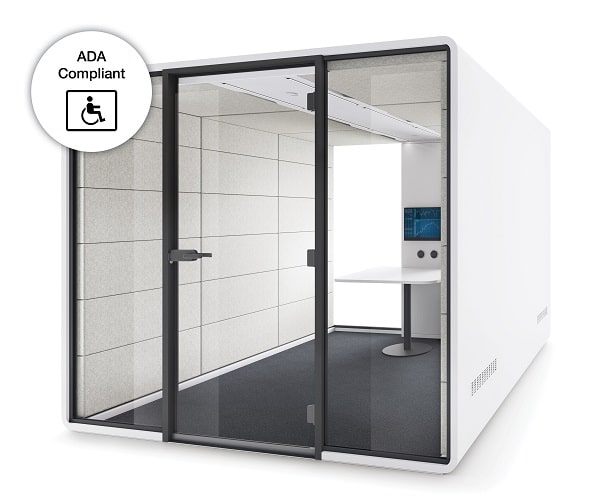
What symptoms of sensory overload do employees commonly exhibit?
Struggle to focus due to competing stimuli. Intense irritability. Restlessness. Unease. Feeling wound up. Stress. Fear. Anxiety. Though the symptoms of sensory overload are unpleasant, each one is a figurative check engine light pointing to disharmony in the office that can be addressed.
– says Mateusz Barczyk, Senior Brand Manager, Hushoffice.What drives intelligent office design is an appreciation for how deeply and inextricably the built world shapes thoughts and feelings. Ultimately, human potential is limited or delimited by any physical space. We see this relationship plainly when workers show signs they are fatigued by the commotion in their office. Perhaps an employee is moody and easily upset. Perhaps they are frequently anxious, excessively worried about meeting deadlines. Perhaps they regularly have a hard time bringing their work into focus. In all cases, the office environment most certainly plays some role. And in all cases, making the office more hushed, with less activity, is sure to have positive results
Acoustic pods help curb sensory overload in open space offices.
The clear way to alleviate sensory overload is to cut the amount of sensory input in your environment. This is why medical experts recommend employees retreat to safe spaces in the office when overload occurs. Quiet, private, and peaceful, acoustic pods are this safe space.
Acoustic pods for offices reduce stimuli, alleviating overwhelm.
A pod is a quiet, private space, with minimal stimuli. It is a controlled environment. It has sparse audio, visual, and olfactory happenings. Its oasis of manageable sensory input allows employees an escape from the lively, tiring open floor.
Where should acoustic pods be placed in the office for an ultimate sensory break?
For special seclusion, pods should be placed remotely; a hidden corner or hallway suffices. Consider also placing one of your pods near a window, giving views to the outdoors. The benefit of a virtual nature break may be much appreciated.
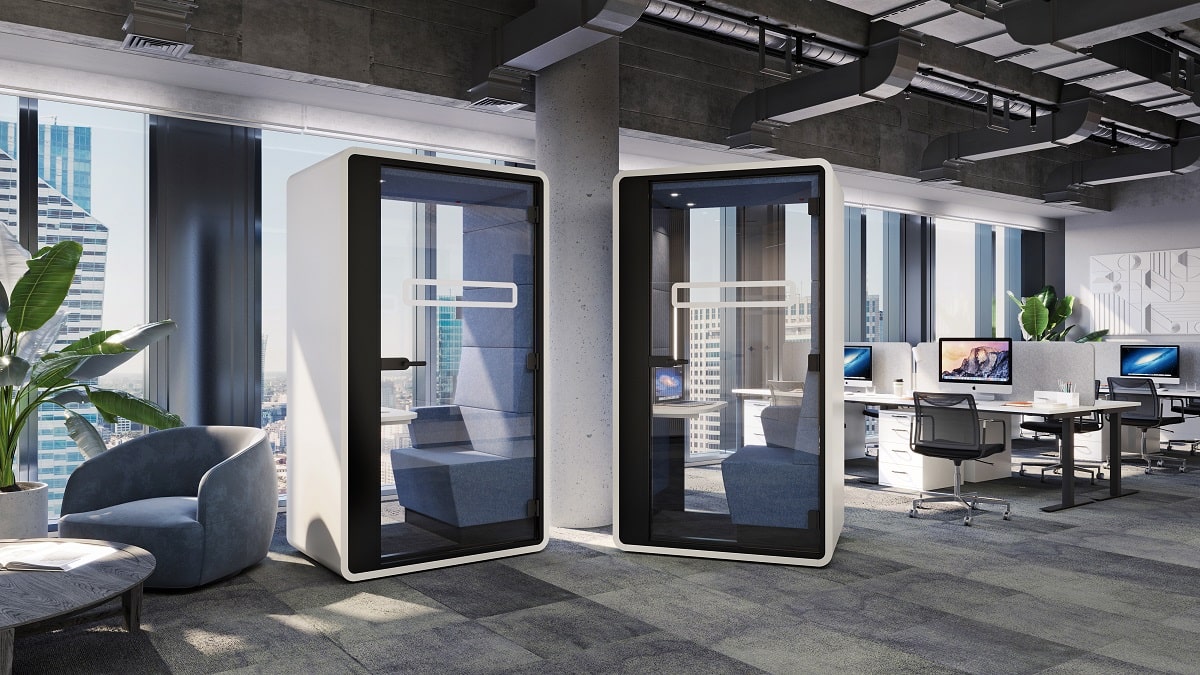
Acoustic pods and booths integrate into any office space seamlessly.
What makes office work pods such a beautiful solution is that they work in any office layout quite naturally. This is on account of their streamlined design, strictly focused on merging practicality and comfort for the user’s greatest ease.
Visually, Hushoffice pods blend simple and sophisticated. In terms of use, convenience is their attribute. They are compact, self-contained structures that fit into any office wherever they are placed, taking up little space. Their clean, polished appearance is consummated by soft-upholstered interior panels and cozy furniture that greet you as you set foot inside, inviting you to take a seat and relax into the task before you. Adjustable lighting for adjustable ambiance makes a lovely finishing touch, giving you extra control over your immediate space. Every pod in the line can also be personalized in a client’s choice of colors for the exterior and interior details. They are a simple solution to a host of complicated problems: office noise, personal privacy, and employee comfort
– says Mateusz Barczyk, Senior Brand Manager, Hushoffice.
The benefits of using acoustic booths in offices are simply practical.
Portable acoustic booths benefit focus. Meeting booths such as hushMeet also reduce background office noise, functioning as devoted, sound-insulated spaces to collaborate. Such pods and booths have a refined look, offering a professional atmosphere for business negotiations as well.
Improved concentration and employee effectiveness…
Need a workspace that prioritizes both productivity and privacy? Pods are an excellent choice. By doing away with the distractions commonly present in open floors, they allow your employees to focus on tasks efficiently, free from interruptions in their surroundings.
Less background office noise…
Pods are precisely designed to be acoustically supreme environments. Their soundproofing blocks out all noise from the floor; inside a pod, all that is heard from the floor beyond is a gentle if not soothing ambient murmur. The experience is natural and conducive to easy focus.
A professional space for undisturbed discussion and meetings…
Chatter, halfologues, and device notifications create chaos. A pod shields colleagues from this floor chaos in its intimate, professional setting. May the office ebb and flow with undulating bustle. A team pod like hushAccess.L remains an impenetrable space of steady focus.
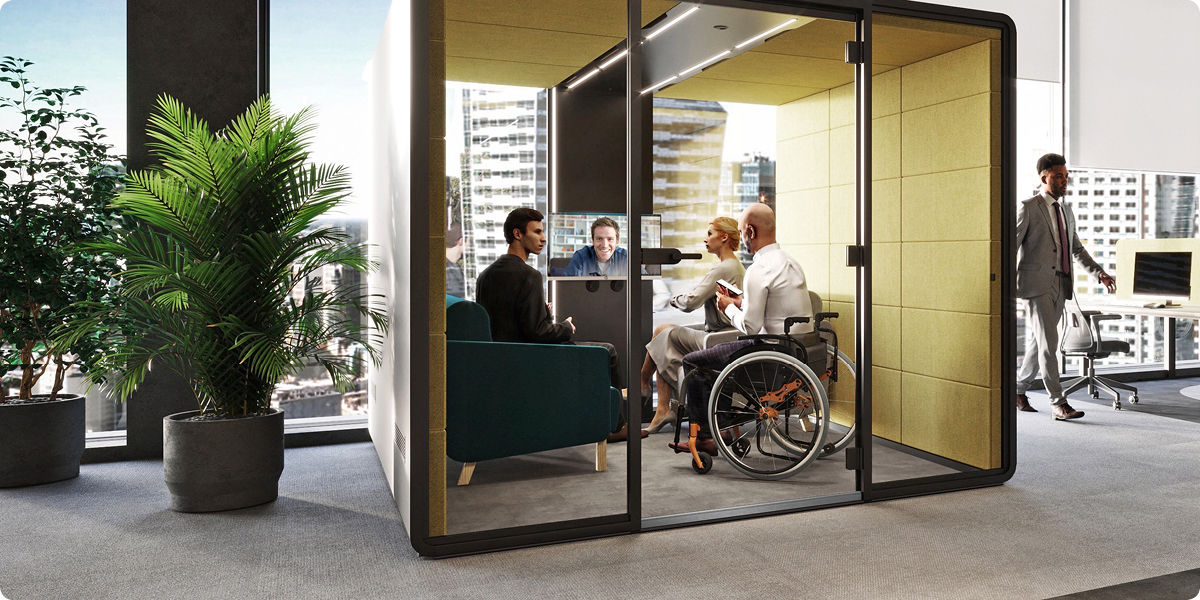
Acoustic pods elevate office spaces of all kinds.
Whether your team shares an activity-based, hybrid, or open-concept layout, pods and booths can help realize the floor’s capacity.
Activity-based workplaces need closed workspaces like pods.
ABW offices boast more communication among colleagues and supervisors, heightening performance and creativity. But without some closed workspaces, their hustle hinders focus. HushMeet is the 4-person closed workspace that makes ABW offices work.

Hybrid offices need dedicated video conference booths to keep teams connected.
Today, many companies are most focused on improving their video call technology — platforms, microphones, speakers, cameras, high-def displays, and room set-up. HushHybrid is a fully equipped one-person video conferencing booth ready for this hybrid world.
Open plan offices need cozy break rooms for relaxation.
73% of employees missed socializing with peers in their office. An equal share missed the office’s division between work and life. A large booth like hushAccess.L is most multi-purpose, being big enough to host the recreation that strengthens relationships, giving more balance to work.
Sensory overload in open plan offices – summarized
Sensory overload in the office happens when an employee is overwhelmed by the stimuli around them. At least one of the five senses may be taxed. In many cases, multiple senses may be overburdened at once. Employees with ADHD, autism, PTSD and other conditions which affect the way they process sensory input are most adversely affected by high-activity office spaces. Accommodating this cohort is requisite to designing a universal workplace which is inclusive and accessible.
Common sources of sensory overload in the office include background noise, bright, harsh lighting, cleaning chemical smells, employee perfumes and colognes, offensive food scents, and excess visual or peripheral commotion. Of all these sources, office noise is shown to be the most destructive on well-being and cognition.
The clear way to alleviate sensory overload is to give the senses a break from all the commotion. Acoustic office pods are excellent solutions to this dilemma as they are quiet, private, self-contained environments where employees can tune out the world and recharge.
Sensory overload – frequently asked questions
How do you deal with sensory overload in the workplace?
To give your system a break, limit the amount of information it is processing. Noise-canceling earbuds can help block out unwanted sounds while blue blocking glasses may give your eyes a rest from fatiguing computer light. Ask your employer to consider desktop privacy screens which will afford you more personal space while shielding peripheral activities. If possible, retreat to a seclusive space like a work pod where you can dim the lights and relax for a moment.
How do I accommodate my sensory-sensitive employees?
For people who get easily overstimulated by their environment, the best remedy is to give them more control over their space. This can entail simple solutions like desktop privacy panels, personal fans, and adjustable task lighting.
How do you stop sensory overload at work?
If possible, break in an isolated space for a moment when you are feeling totally overstimulated. There are also many basic measures you can take right at your desk to prevent your senses from being overwhelmed in the first place. To block out flickering lights and peripheral activities, consider wearing a hat as needed. Noise-cancelling headphones can be a great help if ambient sounds are a problem. You may consider asking to readjust your desk location to give you more separation while you work as well.
